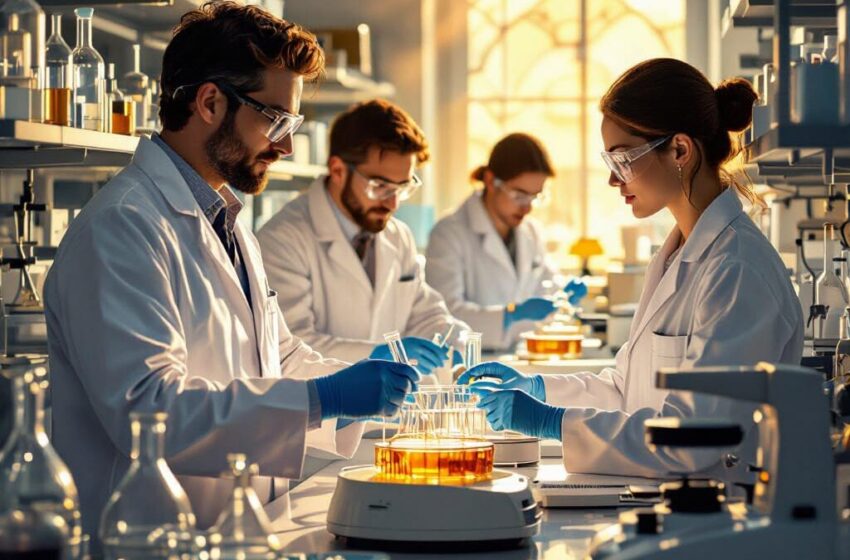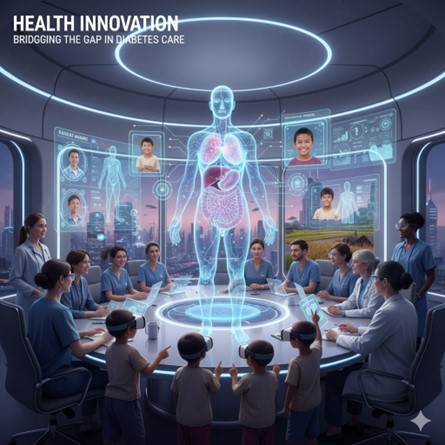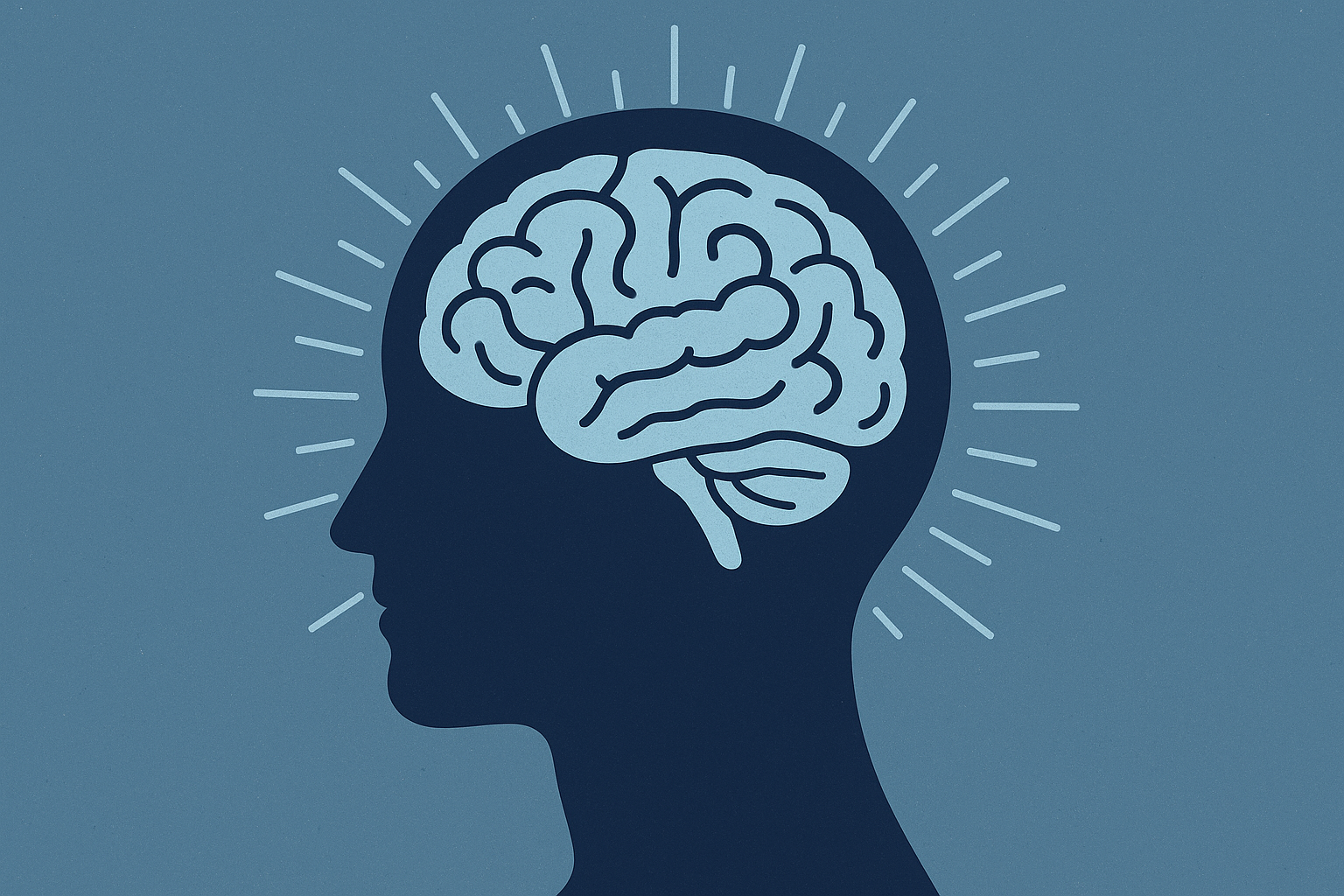Interview with Michael Wilhide: Making a career transition to medical laboratories

When most people think of healthcare heroes, they often picture nurses, doctors, medical assistants, or emergency medical technicians. But there is another vital group that works quietly behind the scenes—medical laboratory professionals. Here, we present an interview with Michael Wilhide, who is a regular contributor to Editage Insights on topics around healthcare and medicine, science communication and career journeys.
What do medical laboratory professionals do in everyday healthcare?
Answer: When your blood is drawn at a doctor’s office or laboratory center, it is typically done by a phlebotomist, a trained professional who specializes in collecting blood samples for diagnostic testing. You may notice them carrying a variety of tubes with colored rubber stoppers such as red, green, lavender, light blue, gray, gold, pink, and yellow. These colors are not random. They indicate the additives inside the tubes, which either prevent clotting (known as anticoagulants) or promote it (known as clot activators), depending on the type of test being performed.
For example:
- Red top tubes contain no additives and allow blood to clot naturally. These are commonly used for serum-based chemistry panels, including liver and kidney function tests and electrolyte analysis.
- Green top tubes contain heparin, an anticoagulant that prevents clotting. These are ideal for plasma-based tests such as electrolyte panels, whole blood chemistry tests, hematology tests, arterial blood gas measurements, and certain enzyme assays.
Each tube is selected based on the type of clinical test ordered and the specific requirements of the assay. Once the blood is collected, the phlebotomist will label each tube with two patient identifiers, usually your full name and date of birth. You will be asked to confirm this information to ensure accuracy. The labeled tubes are then placed in a clear biohazard bag with the test order form and sent to a reference laboratory or a centralized clinical laboratory within your healthcare system.
From there, the real hidden heroes take over:
- Specimen accessioners receive, log, and prepare the samples for analysis.
- Medical technologists and clinical laboratory scientists perform the diagnostic tests ordered by your healthcare provider.
- Lab supervisors, lab managers, and medical directors oversee laboratory operations and ensure the quality, accuracy, and reliability of all testing services.
These professionals play a critical role in the healthcare team. Without their expertise and attention to detail, doctors would not have the information they need to diagnose conditions or guide treatment plans. They are the team behind the results, the often overlooked but essential heroes who work every day to support patient care.
🔬 The Lab Behind the Results
- Specimen accessioners = Log and prep samples
- Medical technologists/CLS = Perform testing
- Supervisors & directors = Maintain accuracy
👉 Without them, doctors wouldn’t have reliable data for patient care.
What career opportunities exist in clinical laboratories?
Answer: You may be a seasoned scientist with years of experience in academic research or industry. Or you may be someone who is interested in science and wants to be part of the team behind the scenes. One career path worth considering is becoming a medical technologist or clinical laboratory scientist. These roles provide valuable hands-on experience and can open doors to leadership positions such as lab supervisor, lab manager, or clinical laboratory director. The director’s role typically requires a medical degree (MD), a doctoral degree (PhD), or both, along with professional certifications.
Can you share your own career journey from research to the clinical lab?
Answer: Most of my career after graduate school was spent as a research assistant, research associate, lab manager, and scientist in academic research laboratories and industry. A year before the COVID-19 pandemic, I had the opportunity to work for a startup clinical laboratory as a Molecular Biology Technologist. This role gave me valuable experience in a CLIA regulated clinical molecular diagnostic laboratory, which was a very different environment compared to academia. I learned a great deal and truly enjoyed the work we were doing.
Later, I joined a well-known multinational technology company that was starting a clinical laboratory. My colleagues and I tested over two million COVID-19 samples. I worked alongside professionals who were board certified by the American Society of Clinical Pathology (ASCP) in various specialties including Medical Laboratory Technician, MLT(ASCP)CM, Clinical Laboratory Scientist, CLS(ASCP)CM, and Technologist in Molecular Biology, MB(ASCP)CM, as well as those working toward certification.
Through this experience, I met the eligibility requirements for taking ASCP Board Certification Exam, which include specific educational qualifications and clinical laboratory experience, or graduation from an accredited medical technologist or clinical laboratory scientist program. I passed the exam and earned my credentials as a Technologist in Molecular Biology, MB(ASCP)CM, which qualifies me to perform molecular diagnostic testing in clinical laboratories.
Looking back, I wish I had known earlier that there were many career paths in science beyond becoming a professor or an industry scientist. As a student, I was not aware of the rewarding opportunities in clinical laboratory careers, such as becoming a medical technologist or clinical laboratory scientist.
What are the main pathways to working in a clinical laboratory?
Answer: Most clinical laboratories, whether large reference labs or hospital-based facilities, require ASCP board certification for employment, along with any required state license. Many positions prefer a generalist certification such as MLT(ASCP)CM or CLS(ASCP)CM, which covers a wide range of disciplines, while others call for a specialized credential. Certifications are valid for three years and must be renewed through the Credential Maintenance Program (CM).
There are several routes to eligibility depending on education and experience. Common pathways include completing a NAACLS-accredited program in Medical Laboratory Sciences, earning a bachelor’s degree with science coursework in areas like blood banking, chemistry, hematology, and microbiology, and gaining relevant clinical experience. In some cases, prior certification may also count toward eligibility. After ASCP reviews your qualifications, you must pass the appropriate ASCP board examination.
References
Centers for Disease Control and Prevention. (2023). Laboratory professionals. U.S. Department of Health and Human Services. https://www.cdc.gov/laboratory/professionals.html
Clinical Laboratory Science Connect. (2023). What they do not tell you: The real day in the life of a clinical laboratory scientist. https://cls-connect.com/articles-blogs/what-they-dont-tell-you-the-real-day-in-the-life-of-a-clinical-laboratory-scientist/
Mayo Clinic College of Medicine and Science. (2025). Medical laboratory scientist (MLS) career overview. https://college.mayo.edu/academics/explore-health-care-careers/careers-a-z/medical-laboratory-scientist/
Trusted Health. (2025). Lab scientist career guide. https://www.trustedhealth.com/allied-career-guide/lab-scientist
U.S. Bureau of Labor Statistics. (2024, April). Clinical laboratory technologists and technicians. Occupational Outlook Handbook. https://www.bls.gov/ooh/healthcare/clinical-laboratory-technologists-and-technicians.htm
American Society for Clinical Laboratory Science. (2023). Addressing the clinical laboratory workforce shortage. https://ascls.org/addressing-the-clinical-laboratory-workforce-shortage/
Lighthouse Lab Services. (2023). Six things labs need to be aware of in 2023. https://www.lighthouselabservices.com/6-things-labs-need-to-be-aware-of-in-2023/
Molecular Abbott. (2025). How to survive and thrive in a historic workforce shortage. https://www.molecular.abbott/us/en/recalibrate/how-to-survive-and-thrive-in-a-historic-workforce-shortage
PRS Global. (2023). The growing medical technologist shortage: A critical challenge. https://prsglobal.com/blog/the-growing-med-tech-shortage-a-critical-challenge
Annals of Laboratory Medicine. (2023). Pharmacogenomics and personalized medicine. https://www.annlabmed.org/journal/view.html?uid=3625&vmd=Full
National Center for Biotechnology Information. (2021). Artificial intelligence in laboratory medicine. https://www.ncbi.nlm.nih.gov/pmc/articles/PMC7877825/
Ohio State University Human Resources. (2025). Medical laboratory science career outlook. https://hrs.osu.edu/academics/undergraduate-programs/medical-laboratory-science/career-outlook









